NFT Dashboard Application Development.
Through a wide variety of mobile applications, we’ve developed a unique visual system.
- Client George Wallace
- Date 15 June 2022
- Services Web Application
- Budget $100000+
<span style="color: #282828; font-family: Roboto, Arial, sans-serif;"><span style="font-size: 14px;">Hey, This is MD Omar Makki. A Digital Entrepreneur, Author, Blogger, Influencer, Content Creator, Web Developer & Designer, SEO Expert, Digital Marketing Specialis. Also CEO & Founder of Tech Makki, one of the most popular IT Agency of Bangladesh. </span></span>
A Digital Entrepreneur, Blogger, Marketing Consultant, SEO Specialist, Web Developer & Designer, Digital Marketing Expert. Also Founder & CEO of Tech Makki, one of the most popular IT Agency of Bangladesh.

We'll help you to grow your business and eliminate unnecessary costs. Our expert handle everything.
I can make your business website a revenue-generating machine rather than creating just an online identity.
Help to rank your website on first page of Google Search 100% guaranteed by following (white hat SEO) Google guidelines.
Help to create content, manage account, groups and social media advertising to increase your visibility and brand awareness.
Helps Google search and your prospective customers 24/7 to find your Products or Services online whenever they need.
We, as a team, try to solve all your common digital marketing problems with the best proved solutions 24/7 support from us.
Through a wide variety of mobile applications, we’ve developed a unique visual system.
There are always some stocks, which illusively scale lofty heights in a given time period. However, the good show doesn’t last for these overblown toxic stocks as their current price is not justified by their fundamental strength.
A strategy is a general plan to achieve one or more long-term. labore et dolore magna aliqua.
UI/UX Design, Art Direction, A design is a plan or specification for art. which illusively scale lofty heights.
User experience (UX) design is the process design teams use to create products that provide.
Toxic companies are usually characterized by huge debt loads and are vulnerable to external shocks. Accurately identifying such bloated stocks and getting rid of them at the right time can protect your portfolio.
Overpricing of these toxic stocks can be attributed to either an irrational enthusiasm surrounding them or some serious fundamental drawbacks. If you own such bubble stocks for an inordinate period of time, you are bound to see a massive erosion of wealth.
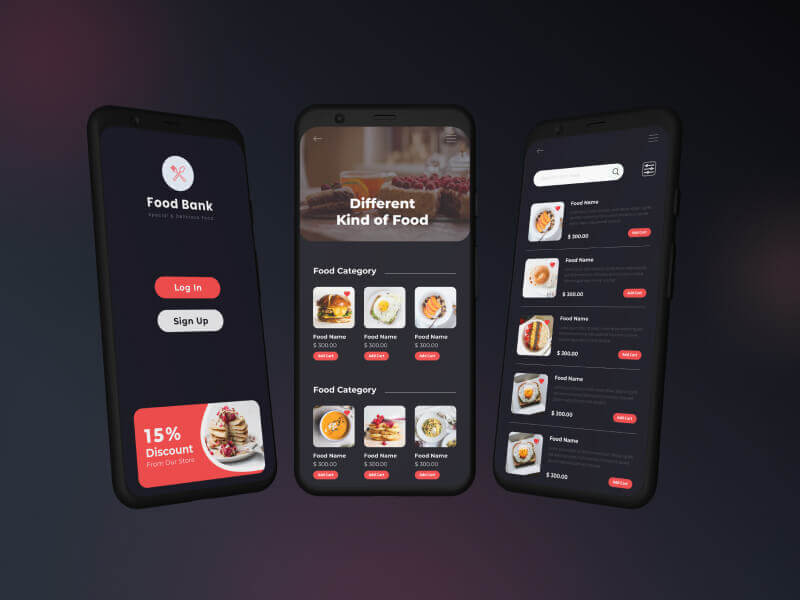
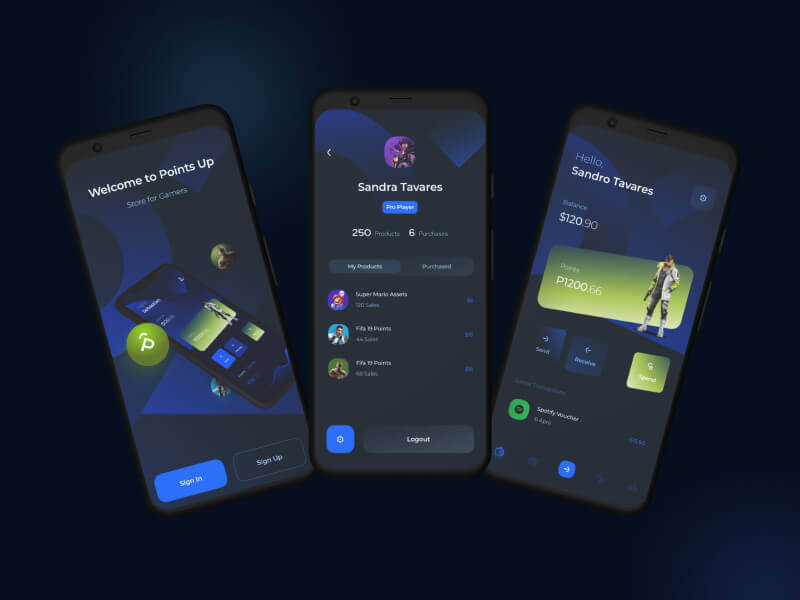
However, if you can precisely spot such toxic stocks, you may gain by resorting to an investing strategy called short selling. This strategy allows one to sell a stock first and then buy it when the price falls.
While short selling excels in bear markets, it typically loses money in bull markets.
So, just like identifying stocks with growth potential, pinpointing toxic stocks and offloading them at the right time is crucial to guard one’s portfolio from big losses or make profits by short selling them. Heska Corporation HSKA, Tandem Diabetes Care, Inc. TNDM, Credit Suisse Group CS,Zalando SE ZLNDY and Las Vegas Sands LVS are a few such toxic stocks.Screening Criteria
Here is a winning strategy that will help you to identify overhyped toxic stocks:
Most recent Debt/Equity Ratio greater than the median industry average: High debt/equity ratio implies high leverage. High leverage indicates a huge level of repayment that the company has to make in connection with the debt amount.
Through a wide variety of mobile applications.

UI/UX Design, Art Direction, A design is a plan or specification for art viverra maecenas accumsan.
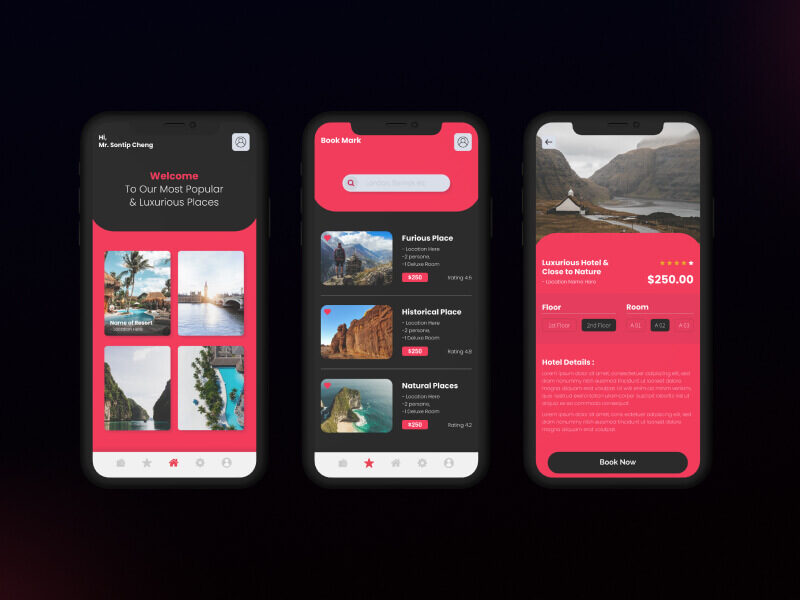
Through a wide variety of mobile applications, we’ve developed a unique visual system and strategy that can be applied across the spectrum of available applications.
Most recent Debt/Equity Ratio greater than the median industry average: High debt/equity ratio implies high leverage. High leverage indicates a huge level of repayment that the company has to make in connection with the debt amount.
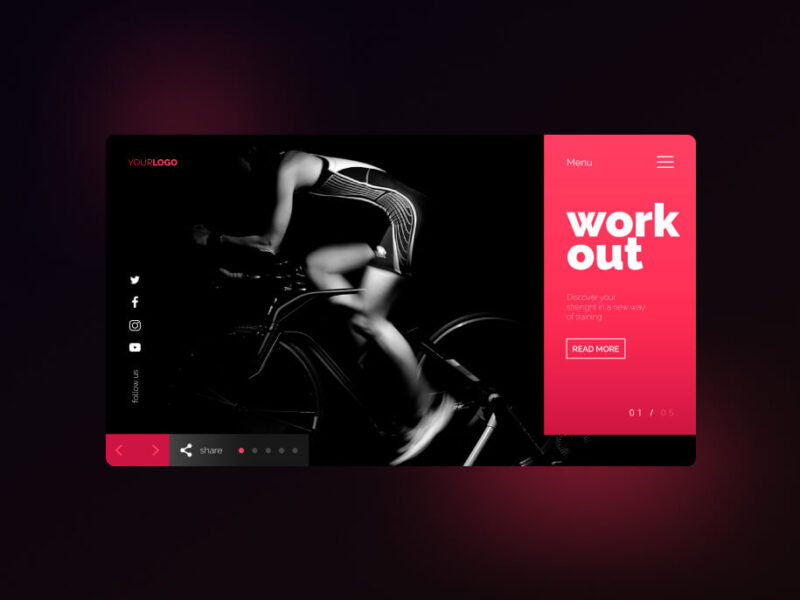
Through a wide variety of mobile applications, we’ve developed a unique visual system and strategy that can be applied across the spectrum of available applications.
A strategy is a general plan to achieve one or more long-term.
UI/UX Design, Art Direction, A design is a plan or specification for art.
Lorem ipsum dolor sit amet, consectetur adipiscing elit, sed do eiusmod tempor incididunt ut labore et dolore magna aliqua. Quis ipsum suspendisse ultrices gravida. Risus commod viverra maecenas accumsan lacus vel facilisis. ut labore et dolore magna aliqua.


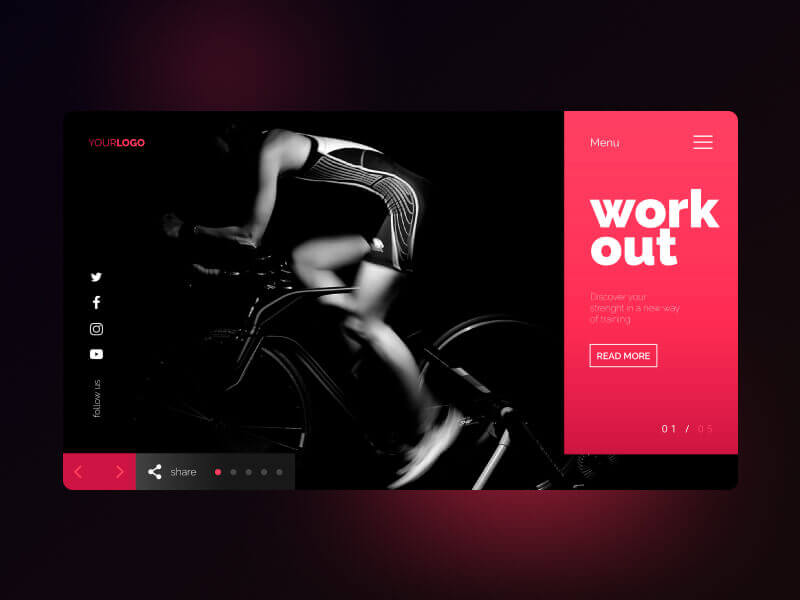
There are always some stocks, which illusively scale lofty heights in a given time period. However, the good show doesn’t last for these overblown toxic stocks as their current price is not justified by their fundamental strength.
Toxic companies are usually characterized by huge debt loads and are vulnerable to external shocks. Accurately identifying such bloated stocks and getting rid of them at the right time can protect your portfolio.
Overpricing of these toxic stocks can be attributed to either an irrational enthusiasm surrounding them or some serious fundamental drawbacks. If you own such bubble stocks for an inordinate period of time, you are bound to see a massive erosion of wealth.
However, if you can precisely spot such toxic stocks, you may gain by resorting to an investing strategy called short selling. This strategy allows one to sell a stock first and then buy it when the price falls.
While short selling excels in bear markets, it typically loses money in bull markets.
So, just like identifying stocks with growth potential, pinpointing toxic stocks and offloading them at the right time is crucial to guard one’s portfolio from big losses or make profits by short selling them. Heska Corporation HSKA, Tandem Diabetes Care, Inc. TNDM, Credit Suisse Group CS,Zalando SE ZLNDY and Las Vegas Sands LVS are a few such toxic stocks.Screening Criteria
Here is a winning strategy that will help you to identify overhyped toxic stocks:

Most recent Debt/Equity Ratio greater than the median industry average: High debt/equity ratio implies high leverage. High leverage indicates a huge level of repayment that the company has to make in connection with the debt amount.
Through a wide variety of mobile applications, we’ve developed a unique visual system and strategy that can be applied across the spectrum of available applications.
A strategy is a general plan to achieve one or more long-term.
UI/UX Design, Art Direction, A design is a plan or specification for art.
Lorem ipsum dolor sit amet, consectetur adipiscing elit, sed do eiusmod tempor incididunt ut labore et dolore magna aliqua. Quis ipsum suspendisse ultrices gravida. Risus commod viverra maecenas accumsan lacus vel facilisis. ut labore et dolore magna aliqua.
There are always some stocks, which illusively scale lofty heights in a given time period. However, the good show doesn’t last for these overblown toxic stocks as their current price is not justified by their fundamental strength.
Toxic companies are usually characterized by huge debt loads and are vulnerable to external shocks. Accurately identifying such bloated stocks and getting rid of them at the right time can protect your portfolio.



Overpricing of these toxic stocks can be attributed to either an irrational enthusiasm surrounding them or some serious fundamental drawbacks. If you own such bubble stocks for an inordinate period of time, you are bound to see a massive erosion of wealth.
However, if you can precisely spot such toxic stocks, you may gain by resorting to an investing strategy called short selling. This strategy allows one to sell a stock first and then buy it when the price falls.
While short selling excels in bear markets, it typically loses money in bull markets.
So, just like identifying stocks with growth potential, pinpointing toxic stocks and offloading them at the right time is crucial to guard one’s portfolio from big losses or make profits by short selling them. Heska Corporation HSKA, Tandem Diabetes Care, Inc. TNDM, Credit Suisse Group CS,Zalando SE ZLNDY and Las Vegas Sands LVS are a few such toxic stocks.Screening Criteria
Here is a winning strategy that will help you to identify overhyped toxic stocks:

Most recent Debt/Equity Ratio greater than the median industry average: High debt/equity ratio implies high leverage. High leverage indicates a huge level of repayment that the company has to make in connection with the debt amount.
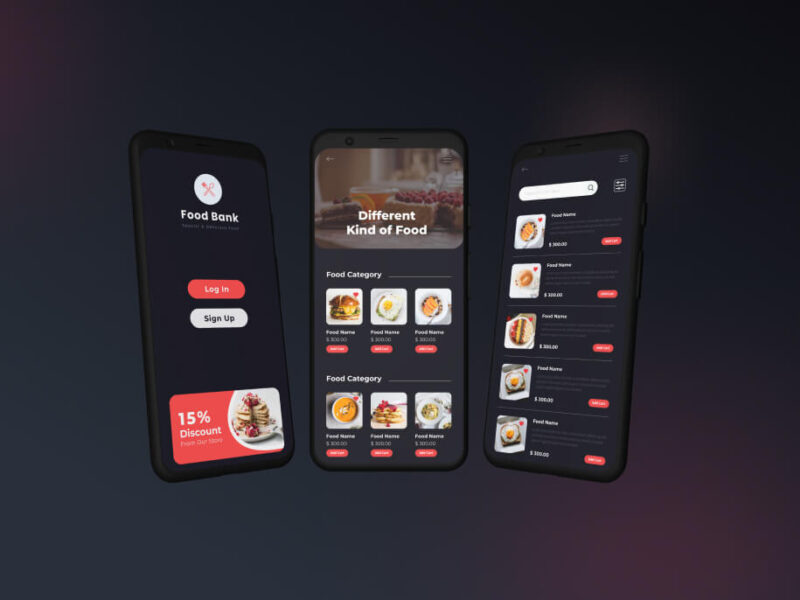
Through a wide variety of mobile applications, we’ve developed a unique visual system and strategy that can be applied across the spectrum of available applications.
A strategy is a general plan to achieve one or more long-term.
UI/UX Design, Art Direction, A design is a plan or specification for art.
Lorem ipsum dolor sit amet, consectetur adipiscing elit, sed do eiusmod tempor incididunt ut labore et dolore magna aliqua. Quis ipsum suspendisse ultrices gravida. Risus commod viverra maecenas accumsan lacus vel facilisis. ut labore et dolore magna aliqua.
There are always some stocks, which illusively scale lofty heights in a given time period. However, the good show doesn’t last for these overblown toxic stocks as their current price is not justified by their fundamental strength.
Toxic companies are usually characterized by huge debt loads and are vulnerable to external shocks. Accurately identifying such bloated stocks and getting rid of them at the right time can protect your portfolio.



Overpricing of these toxic stocks can be attributed to either an irrational enthusiasm surrounding them or some serious fundamental drawbacks. If you own such bubble stocks for an inordinate period of time, you are bound to see a massive erosion of wealth.
However, if you can precisely spot such toxic stocks, you may gain by resorting to an investing strategy called short selling. This strategy allows one to sell a stock first and then buy it when the price falls.
While short selling excels in bear markets, it typically loses money in bull markets.
So, just like identifying stocks with growth potential, pinpointing toxic stocks and offloading them at the right time is crucial to guard one’s portfolio from big losses or make profits by short selling them. Heska Corporation HSKA, Tandem Diabetes Care, Inc. TNDM, Credit Suisse Group CS,Zalando SE ZLNDY and Las Vegas Sands LVS are a few such toxic stocks.Screening Criteria
Here is a winning strategy that will help you to identify overhyped toxic stocks:

Most recent Debt/Equity Ratio greater than the median industry average: High debt/equity ratio implies high leverage. High leverage indicates a huge level of repayment that the company has to make in connection with the debt amount.
I'm working as a freelance on fiverr, upwork, peopleperhour, seoclerk and social media. And from their to create a Tech Makki IT agency.
The Bangladesh economy has grown strongly over recent years, having transformed itself from a producer and innovation-based economy.
A popular destination with a growing number of highly qualified homegrown graduates, it's true that securing a role in Malaysia isn't easy.
I'm starting a early online based instruction about Digital Marketing Service & SEO service related learning sector. That time have some limited learning ways.
More than 400 people are watching daily and register to learn SEO & Link building techniques to make money by providing freelance services.
Almost 1 year work as a WordPress developer and guide/train them as a instructor. After a year I'm just leave and start again my online live classes/courses.
The education should be very interactual. Ut tincidunt est ac dolor aliquam sodales. Phasellus sed mauris hendrerit, laoreet sem in, lobortis mauris hendrerit ante.
The education should be very interactual. Ut tincidunt est ac dolor aliquam sodales. Phasellus sed mauris hendrerit, laoreet sem in, lobortis mauris hendrerit ante.
The education should be very interactual. Ut tincidunt est ac dolor aliquam sodales. Phasellus sed mauris hendrerit, laoreet sem in, lobortis mauris hendrerit ante.
The education should be very interactual. Ut tincidunt est ac dolor aliquam sodales. Phasellus sed mauris hendrerit, laoreet sem in, lobortis mauris hendrerit ante.
The education should be very interactual. Ut tincidunt est ac dolor aliquam sodales. Phasellus sed mauris hendrerit, laoreet sem in, lobortis mauris hendrerit ante.
The education should be very interactual. Ut tincidunt est ac dolor aliquam sodales. Phasellus sed mauris hendrerit, laoreet sem in, lobortis mauris hendrerit ante.
I’m a Digital Entrepreneur, Content Creator, Web Developer & Designer, Digital Marketing Expert, SEO specialist And content writer or blogger. You May Call Him A-One-Man-Army!
A hands-on workaholic creative entrepreneur and digital marketer with more than 14 years’ fieldwork experience along with a growing list of satisfied customers on my side. He has been responsible for bringing concepts to life for clients as enjoys working on the internet and learning everything there is to know about digital platforms. In addition to his introduction, He believes detailed research is a must when it comes to any digital site. Furthermore, he remains connected to digital media in addition to learning more.
In 2013 Bangladeshi people know me as a Best Digital Marketing Expert in Bangladesh. And after few years when start my live class training about SEO then people called me Top SEO Expert in Bangladesh.

Maecenas finibus nec sem ut imperdiet. Ut tincidunt est ac dolor aliquam sodales. Phasellus sed mauris hendrerit, laoreet sem in, lobortis mauris hendrerit ante. Ut tincidunt est ac dolor aliquam sodales phasellus smauris test

Maecenas finibus nec sem ut imperdiet. Ut tincidunt est ac dolor aliquam sodales. Phasellus sed mauris hendrerit, laoreet sem in, lobortis mauris hendrerit ante. Ut tincidunt est ac dolor aliquam sodales phasellus smauris test

Maecenas finibus nec sem ut imperdiet. Ut tincidunt est ac dolor aliquam sodales. Phasellus sed mauris hendrerit, laoreet sem in, lobortis mauris hendrerit ante. Ut tincidunt est ac dolor aliquam sodales phasellus smauris
All the Lorem Ipsum generators on the Internet tend to repeat predefined chunks as necessary
1 Page with Elementor
Design Customization
Responsive Design
Content Upload
Design Customization
2 Plugins/Extensions
Multipage Elementor
Design Figma
MAintaine Design
Content Upload
Design With XD
8 Plugins/Extensions
All the Lorem Ipsum generators on the Internet tend to repeat predefined chunks as necessary
5 Page with Elementor
Design Customization
Responsive Design
Content Upload
Design Customization
5 Plugins/Extensions
Multipage Elementor
Design Figma
MAintaine Design
Content Upload
Design With XD
50 Plugins/Extensions
All the Lorem Ipsum generators on the Internet tend to repeat predefined chunks as necessary
10 Page with Elementor
Design Customization
Responsive Design
Content Upload
Design Customization
20 Plugins/Extensions
Multipage Elementor
Design Figma
MAintaine Design
Content Upload
Design With XD
100 Plugins/Extensions

The Meta Andromeda update has completely redefined Facebook advertising. Instead of depending on narrow audience targeting, businesses must now focus on broad targeting, diverse creatives, and content refresh.
Meta reports that the Andromeda update delivers:
6% higher retrieval recall
8% improvement in ad quality
Better ROAS for Advantage+ Creative campaigns
For small businesses, this means a level playing field. Even with a modest budget, brands can now achieve greater visibility if campaigns are structured correctly.
Hyper-specific targeting, once the hallmark of expert advertisers, is now less effective. For example, targeting only “Hijab lovers in Dhaka” no longer produces strong results.
Instead:
Use broad targeting (age, location, language).
Allow the algorithm to learn from user responses.
Install Pixel and Conversion API to feed accurate signals.
This approach helps Facebook’s system identify ideal buyers more efficiently than manual targeting ever could.
The new rule of Facebook ads is simple: content is king. One or two visuals are no longer enough.
Recommended creative variations include:
Static images
Short videos (15–30 seconds)
Carousel ads
UGC-style testimonials
Promotional offers
Change your messaging style frequently:
Price-focused ads to highlight affordability
Emotion-driven stories for deeper connection
Problem-solution content to show value
Meme-inspired ads to capture attention
With multiple variations, campaigns stay fresh, relevant, and more likely to go viral organically.
Manual placement selection (e.g., only Facebook Feed or Instagram) is outdated.
With Advantage+ placements, the algorithm automatically finds the platforms where your buyers are most active. Focus your energy on making content variations instead of micromanaging placements.
For small businesses in Bangladesh and beyond, structured budget planning is essential.
Begin with 2–3 ad sets.
Add 3–5 creatives per ad set.
Start with ৳500–৳1000 daily and scale gradually.
Never rely on a single creative. Rotate multiple formats to reduce fatigue.
Without proper tracking, Facebook ads cannot deliver their full potential.
If you do not have a website, track via Facebook Shop or WhatsApp conversion events.
If you have a website, install Pixel + Conversion API for accurate optimization.
Map out the customer journey so each stage sends strong conversion signals to the algorithm.
Old creatives lose power as frequency rises. To avoid declining CTR:
Upload new creatives weekly.
Monitor performance and replace underperforming ads.
Continue testing new hooks, tones, and styles.
Fresh content ensures the algorithm has high-quality material to deliver.
Generic ad copy no longer works. Instead:
Use real customer language.
Highlight current concerns and relatable experiences.
Create localized content with cultural references and emotional triggers.
Personalized hooks improve both CTR and conversions.
Winning with Facebook ads in 2025 requires:
Creative diversity
Broad targeting
Accurate Pixel data
Regular refresh cycles
Objective: Conversions / Sales
Ad Set 1: Broad Targeting (18–40, Bangladesh)
3 short video ads
2 static images
Ad Set 2: Retargeting (Engaged in last 30 days)
Testimonial video
Promotional offer ad
Budget: ৳500–৳700 per ad set daily
Video-first approach → Make video your central content.
Short, engaging formats → Strong hook in first 3–5 seconds.
Storytelling with emotion → Before/after scenarios, real stories.
Build trust → Highlight reviews, UGC, certifications.
Optimize for Reels & Stories → Use vertical videos with captions.
Clear CTAs → Examples: “👉 Order Now”, “🚚 Free Delivery Today”, “🎁 Limited Offer”.
Humanize your brand → Ads should feel like part of real life, not forced promotions.
Q1. What is the Facebook Andromeda update?
The Andromeda update is Meta’s new system that prioritizes creative diversity, broad targeting, and algorithm-driven optimization instead of narrow manual targeting.
Q2. How does Andromeda affect small businesses?
It gives small businesses a fairer chance. Even with limited budgets, campaigns can perform well if they use creative variations and proper conversion tracking.
Q3. Should I still use interest-based targeting?
No. Interest-based targeting is now less effective. Broad targeting with strong creatives works better under the Andromeda system.
Q4. What type of content performs best after Andromeda?
Short videos, UGC testimonials, and localized creative variations are most effective.
Q5. How often should I refresh my ads?
Weekly refresh cycles are recommended to prevent ad fatigue and keep CTR high.
The Facebook Andromeda update has shifted the focus from targeting precision to content excellence. Businesses that embrace video-first campaigns, broad targeting, and continuous testing will see the best results.
For small businesses, this is a chance to thrive. With limited budgets, you can still build a powerful presence if you focus on creative variation, storytelling, and trust-building content.

The Meta Andromeda update has reshaped the way businesses approach Facebook advertising. Where marketers once relied on narrow interest-based targeting, the new system thrives on broad targeting, diverse creative content, and consistent testing. For small businesses, especially in Bangladesh, this is not a setback but a golden opportunity to achieve results even with limited budgets.
In this guide, we break down how to plan campaigns after the Andromeda update and maximize your return on ad spend (ROAS).
According to Meta, the Andromeda update has already shown measurable improvements:
Retrieval recall increased by 6%
Ad quality improved by nearly 8% in some segments
Advantage+ Creative campaigns reported stronger ROAS
The update places more control in the algorithm’s hands. Instead of relying on over-segmented targeting, businesses should now focus on feeding the system high-quality creative variations.
The days of tiny, interest-based targeting groups are fading. Instead of trying to define audiences too tightly (for example, “Hijab lovers in Dhaka”), allow Facebook’s algorithm to determine the right buyers.
Use broad targeting such as age, location, and language.
Ensure Pixel and Conversion API are properly set up so the system can learn from real customer actions.
Trust the algorithm to reach high-potential buyers once it collects the right signals.
Creative diversity is now the formula for success. Running campaigns with just one or two images is no longer effective. Instead, use multiple formats:
Static images
Short videos (15–30 seconds)
Carousels
UGC-style testimonials
Promotional graphics
Beyond format, vary your messaging as well. Try different creative angles:
Price-focused offers
Emotion-driven storytelling
Problem-solution content
Lighthearted, meme-inspired ads
Even with small budgets, campaigns that use multiple variations tend to deliver stronger organic reach and paid results.
Previously, advertisers often restricted placements to Facebook Feed or Instagram only. With Andromeda, this approach is outdated.
Enable Advantage+ placements and let the algorithm test where your audience spends the most time.
Focus your energy on creating creative variations instead of micromanaging placements.
For small entrepreneurs in Bangladesh, budget efficiency is key.
Start with 2–3 ad sets.
Each ad set should contain 3–5 unique creatives.
Begin with a daily spend of ৳500–৳1000 and scale gradually.
Avoid relying on one creative per ad set. Diversity reduces fatigue and increases CTR.
Without proper tracking, the algorithm cannot optimize effectively.
For businesses without websites: use Facebook Shop or WhatsApp conversion events.
For those with websites: install both Pixel and Conversion API.
Map out the customer journey and align content with each stage so the algorithm receives high-quality signals.
Creative fatigue is a common issue. If users see the same ad too often, CTR will drop.
Add fresh content every week.
Rotate creatives before frequency becomes too high.
Continue testing new hooks, styles, and tones to keep ads engaging.
Effective campaigns start with strong hooks. Instead of generic product descriptions, create content based on your audience’s real concerns and language.
Use the words and tone your customers naturally use.
Address their pain points directly.
Add localized humor, cultural references, and real experiences for stronger connection.
Pro Tip: If you use AI tools for drafts, always customize content to reflect audience tone.
Success in the Andromeda era comes down to four pillars:
Creative diversity
Broad targeting
Accurate Pixel data
Regular content refresh
Objective: Sales / Conversions
Ad Set 1: Broad Targeting (18–40, Bangladesh)
3 short video ads
2 static images
Ad Set 2: Retargeting (Last 30 days engaged users)
1 testimonial video
1 promotional offer ad
Budget: ৳500–৳700 per ad set daily
Video-first approach
Make video your primary creative format.
Use images as supportive content.
Short, engaging content
First 3–5 seconds should capture attention.
Recommended length:
Awareness: 15–30 seconds
Consideration: 30–60 seconds
Conversion/Testimonial: 45–90 seconds
Storytelling with emotion
Show before-and-after scenarios or customer experiences.
People buy solutions and emotions, not just products.
Build trust and authority
Highlight reviews, certifications, and UGC.
Share testimonial videos for credibility.
Optimize for short-form platforms
Use vertical videos for Reels, Stories, and Shorts.
Always include subtitles for silent viewers.
Clear calls-to-action (CTA)
Examples:
“👉 Order Now”
“🚚 Get Free Delivery”
“🎁 Limited Offer Today”
Humanize your brand
Ads should feel like part of daily life.
Position your brand as a source of care, confidence, and happiness.
The Andromeda update has shifted Facebook advertising from a targeting-first model to a content-first model. Businesses that embrace creative variation, storytelling, and regular testing will outperform those still clinging to old methods.
For small businesses in Bangladesh and beyond, this update levels the playing field. With smart planning and a content-driven approach, even limited budgets can produce exceptional results.

In today’s digital landscape, social media is no longer just a tool for keeping in touch with friends and family—it’s become a powerful marketing platform for businesses. But with all the potential it offers, managing social media effectively is not as easy as it looks. That’s where a social media marketing company comes into play. From improving brand awareness to driving sales, this article will explain why you need a social media marketing company to elevate your business.
A social media marketing company is a specialized agency that helps businesses grow their online presence through platforms like Facebook, Instagram, LinkedIn, Twitter, and more. These companies have a team of experts who create, manage, and optimize social media campaigns, ensuring your brand is always visible and engaging to the right audience.
Social media platforms have billions of active users worldwide, offering businesses access to a massive audience. Whether you’re a small startup or an established corporation, these platforms provide a direct line to potential customers.
Social media isn’t just about advertising—it’s about creating connections. When used correctly, it can increase brand recognition and allow you to engage with your audience in a more personal and meaningful way.
Social media marketing companies bring industry expertise and knowledge that most businesses don’t have in-house. From understanding algorithms to crafting engaging content, they know how to make your brand stand out.
Running successful social media campaigns requires time, dedication, and creativity. By hiring a professional company, you free up valuable time to focus on other core areas of your business.
A social media marketing company develops tailored strategies based on your business goals. Whether it’s increasing followers, driving traffic to your website, or boosting sales, they can design campaigns that hit the mark.
Content is king, and in social media, quality matters. A social media marketing company produces visually appealing graphics, engaging videos, and compelling copy that resonates with your audience.
One of the key factors in social media success is consistent posting. Agencies ensure your brand stays relevant by maintaining a steady stream of content across your social platforms.
Social media companies manage paid advertising campaigns on platforms like Facebook and Instagram, helping you target specific demographics and interests for better results.
For B2B businesses, LinkedIn and Twitter can be invaluable. A social media marketing company helps you navigate these platforms, crafting campaigns that speak directly to industry professionals and decision-makers.
It’s essential to know how your social media efforts are performing. Marketing companies use advanced analytics tools to track key metrics like engagement, reach, and conversions.
Based on the data gathered, a social media marketing company will fine-tune your campaigns, making necessary adjustments to improve performance.
Social media profiles often rank high in search engine results, boosting your overall visibility. This can enhance your SEO efforts and bring more organic traffic to your site.
Engaging content can earn you valuable backlinks from other sites, further boosting your SEO and domain authority.
Social media allows for real-time communication with your audience. A marketing company will help you engage with your followers, answer questions, and build stronger relationships.
Timely responses to customer feedback are crucial. Social media agencies monitor your platforms to ensure no comment or inquiry goes unanswered.
Social media algorithms are constantly evolving, and staying ahead of the curve can be a challenge. A marketing company keeps up with these changes to ensure your content remains visible.
Consumer preferences on social media change frequently. By understanding trends, a social media company can adjust your strategy to stay relevant.
While some businesses try to handle social media in-house, they often lack the expertise and time required for effective results. Outsourcing to a professional agency can be more cost-effective in the long run.
Investing in a social media marketing company can lead to long-term returns, including increased brand visibility, customer engagement, and sales.
Constantly promoting your products without offering value can drive followers away. A professional agency strikes the right balance between promotion and engagement.
Ignoring your audience or failing to engage can hurt your brand image. Social media companies focus on maintaining an active and responsive presence.
Many businesses have seen significant growth after hiring a social media marketing company. From retail to real estate, success stories highlight the potential for increased sales and brand awareness.
When choosing a social media marketing company, look for experience, client testimonials, and a clear understanding of your industry.
Ask potential agencies about their process, how they measure success, and how they handle changes in strategy.
In the fast-paced world of social media, staying ahead of the competition can be tough. A social media marketing company provides the expertise, tools, and strategies needed to amplify your brand, engage your audience, and drive business growth.

I'm running a agency, You can contact with our COO for more details.
Phone: +88 01537652663 Email: info@MDOmarMakki.Com